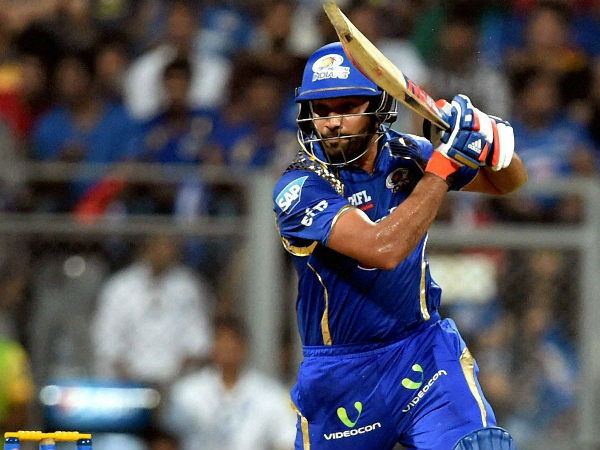
via Imago
Rohit Sharma

via Imago
Rohit Sharma
The fast bowlers have had a difficult time in the IPL so far. In fact, right from the start of the World Cup, apart from the Australians pacers, bowlers in general have found it very difficult to get the better of the opposing batsman. Teams had imperturbably racked up three hundred plus scores indicating that the bowlers had a torrid time at the quadrennial tournament. In the IPL too, the story is pretty much the same, albeit the fact that it is being played in India.
Fast bowlers have gone for plenty of runs in the initial few weeks of the IPL and captains have turned to spinners in order to stem the flow of runs and pick up wickets. The likes of Malinga, Johnson and Steyn have struggled in the ongoing tournament failing to pick up wickets upfront. In the four matches that he has played so far, Johnson has picked up only 5 wickets with an economy close to 9 while Malinga on the other hand has picked up five scalps in five matches with a similar economy rate.
ADVERTISEMENT
Article continues below this ad

Gone are the days when the Carribbean fast bowlers used to strike fear in the minds of batsmen with genuine pace or the swing kings of Pakistan troubled the batsmen with their crazy skills. Limited overs cricket, specially T20, is a different ball game altogether.
The bowlers get just four overs to prove their worth and a few bad balls may ruin their economy for good. In the longer formats of the game (tests and T20), bowlers took around 2-3 overs to settle into a rhythm whereas the shortest format proves to be a huge challenge in this regard, especially after a month and a half of one-day cricket in the World Cup down under.
Then there are players like AB De Villiers who can make a mockery out of any bowling attack when they get going. The bowler has got nowhere to hide when such a batsmen unleashes the wide plethora of innovative shots, getting a boundary on almost every ball and developing a unique binary code of his own: 6464646!

via Getty
Getty Images
At the end of such a carnage, people may ask – Why would anyone want to be a bowler? It’s a fair question too, considering the pitches the games are played on, the kind of bats used these days – no sweet spot, it’s all sweet – and the new rules that put the bowlers at a disadvantage. Moreover, most of the grounds in India are small and the players target the shorter boundary to get easy runs.
The pitches are generally made batsmen friendly, where the ball nicely comes on to the bat at a decent pace, not enough to trouble the batsmen but just enough to play on the rise or through the line. The common rationale in this case is that people want to see fours and sixes being scored more often and that is what is being given to them and a truncated game would lead to losses for the administrators and sponsors. So, such scenarios have to be avoided completely.
ADVERTISEMENT
Article continues below this ad

ADVERTISEMENT
Article continues below this ad
The temperament and approach towards the game has changed a lot. From a batsman’s perspective, the best thing about Twenty20 is the license it gives to attack from the word go. A rash shot in the first five overs of a 50-over game might elicit criticism, but not in the super-crunched version where the batsmen have a free license to go after the bowling right from the start.
All in all, life right now is tough for the bowlers. Successful teams embrace these changes and find ways of coping with the challenges that the new rules present. But it’s easier said than done especially in short tournaments such as the IPL where teams don’t get much time to gel together as a unit. Can the bowlers revive their game or will the batsmen prevail just like they’ve been doing in the tournament so far? Only time can tell.
ADVERTISEMENT
ADVERTISEMENT
ADVERTISEMENT
ADVERTISEMENT


